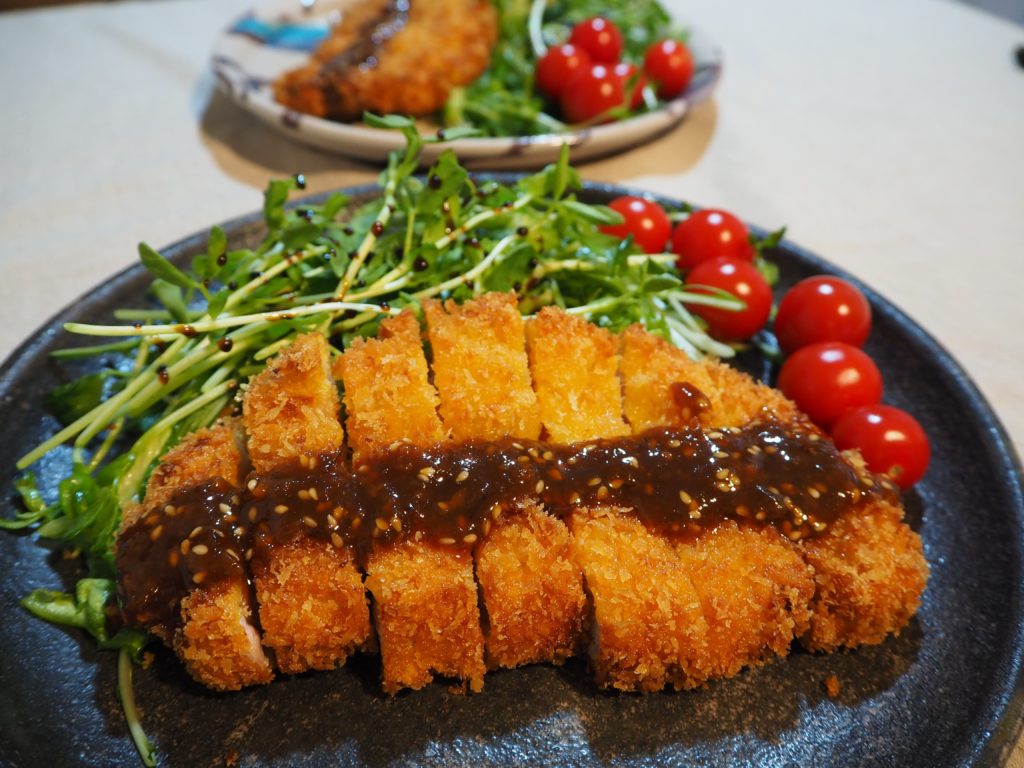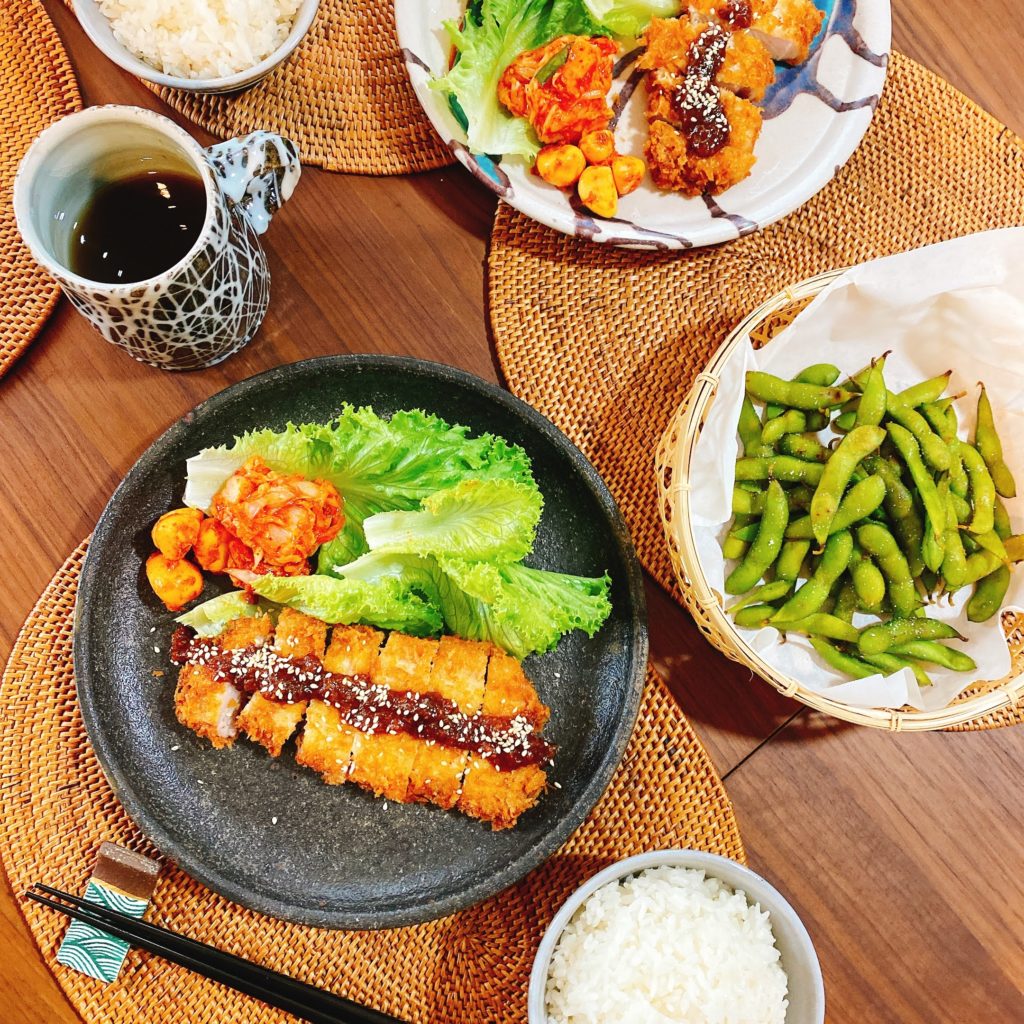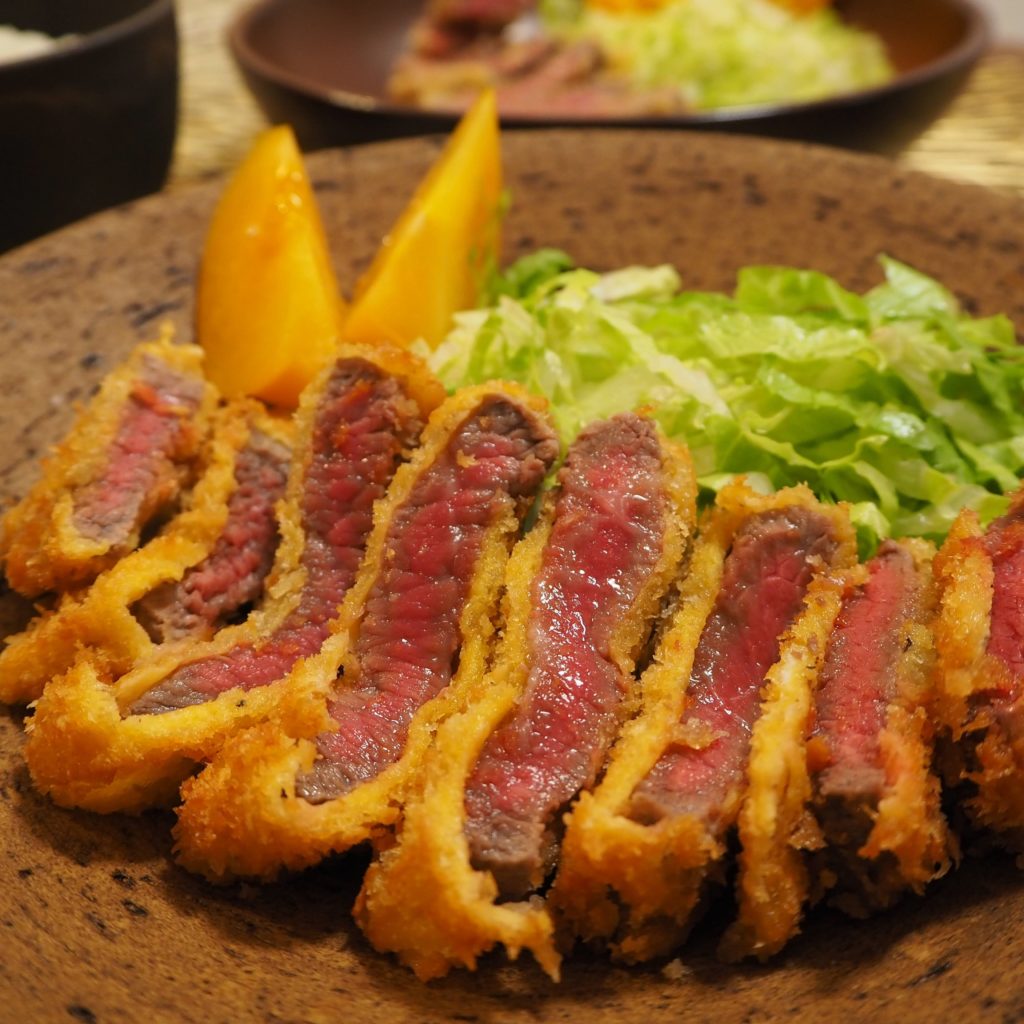Japanese Food History and Culture
Tonkatsu: Japanese Fried Cutlets
No discussion about pork meat in Japanese cuisine can be complete without evoking tonkatsu (豚カツ, pork cutlet). Juicy, crispy, and flavorful, enjoyed by young and old alike, this popular dish is now common in Japanese plates and bentō. It emerged from the Westernization of the country in the second half of the 19th century, and its history can be contrasted to its beef, chicken, and dairy counterparts in the effort towards modernization of Japan. In this article, we will take a look at the origin of the pork cutlet, its myriad variations, and the culture around it.
From the katsuretsu to the tonkatsu
Although meat, notably venison, might have been consumed throughout Japanese history, a certain taboo around meat consumption did exist at least since the Heian period. Livestock was valued for the work it could provide, and the zen branch of Buddhism, popular in Japan, bans the killing of living beings. Meat eating was considered lowly and frowned upon by the nobility. This means that for most of its history, the cuisine Japan developed mainly forwent meat and dairy.1
This came to change with the Meiji restoration (1868) and the fast modernization that followed. The country opened to overseas visitors and promoted a more Western diet, leading to the popularization of dairy products and dishes like gyūnabe (that would evolve into today’s sukiyaki), forming the basis of the yōshoku (洋食, Western food) cuisine.
One of the European dishes introduced during this period was the French côtelette de veau. The use of the word katsuretsu, the Japanese transcription of “côtellete” (or possibly of the English “cutlet”), is attested as early as 1860 in Fukuzawa Yukichi’s Zōtei Kaei Tsūgo. Fukuzawa used the kanji characters 吉列, and other spellings are also attested. However, this 19th-century katsuretsu was quite different from the modern tonkatsu.
It was a piece of meat, often beef, on the bone, coated in a batter, covered in breadcrumbs, and cooked with animal fat (butter, lard) on a frying pan or in an oven. The batter was made with eggs and imported meriken ko (メリケン粉) wheat flour. It was served with a European-style garnish of baked vegetables and a demi-glace sauce, and the course was eaten with a fork and knife.2

From the onset of the Meiji era the government sought to promote livestock farming, and amongst a plethora of measures, imported brood sows from China. However, pig-borne illnesses and issues with the proximity of pig farms to residential areas led to a cycle of promotion and prohibition, hampering the spread of pork in the population’s diet. At the end of the 19th century, the additional importation of English and American pigs (Berkshire and Yorkshire breeds) finally helped curb the issues plaguing domestic pork breeding. Ham and sausages in particular started to gain traction in Japan.

Appearance of the tonkatsu
It is around this time the katsuretsu would evolve and the tonkatsu would first appear. Rengatei, a restaurant established in the Ginza neighborhood of Tōkyō in 1895, was struggling to sell its katsuretsu. It was popular with foreigners living and working nearby, but it didn’t enjoy much success with the Japanese, possibly still unaccustomed to such exotic fares. Inspired by the neighboring tempura places, they started deep-frying the meat in vegetable oil instead of pan-frying. They also replaced veal meat, pungent and expensive, with pork meat. Other changes included removing the bone from the meat, replacing the demi-glace sauce with a Worcestershire sauce, using fresh panko (パン粉) breadcrumbs, and serving shredded cabbage, white rice, and miso soup instead of baked vegetables. The resulting dish was very successful with the locals and in 1899, tonkatsu made its appearance on the menu.3
In 1929, Ponchiken, a restaurant in the Shitaya neighborhood of Tōkyō, further developed the dish by using thicker slices of pork and cutting them before serving, so that customers could eat it with chopsticks (although cutting the tonkatsu before serving might have already been done before with the katsudon, see below).
Thanks to its popularity, the tonkatsu spawned a multitude of variations that became mainstays in their own right.
Katsukarē

The highly popular katsukarē (カツカレー) combines the tonkatsu with Japanese curry, another beloved staple of yōshoku cuisine. The thick gravy complements well the juicy pork meat, and a lot of restaurants specializing in katsu also offer katsukarē. It is said to have originated at either Kawakin in Asakusa (Tōkyō) or Ginza Suisu in Ginza.
Kawakin started as a yōshoku food stall in 1918 and offered food to be eaten quickly on the spot. They served the kawakindon, a donburi (丼, rice bowl) topped with shredded cabbage and tonkatsu, and steeped in a thick curry. Although the original location doesn’t operate anymore, it spawned branches that still serve kawakindon to this day.4
Ginza Suisu offers an alternative origin story for the katsukarē. In the 40s, the restaurant was frequented by players and staff from the Tōkyō Giants baseball team, who went to a nearby tailor for their jerseys. One day in 1948, the third base Chiba Shigeru came in, and possibly in a hurry, asked the chef to just top the curry he had ordered with tonkatsu. The chef obliged, and while it wasn’t an item on the menu, word quickly spread amongst regulars and the dish was soon becoming popular.5
As to which one is the real origin of katsukarē, although the components are the same in both cases, the kawakindon piles up rice, cabbage, tonkatsu, and curry on top of one another. It was thought of as a donburi and combined all ingredients to be easy to eat with chopsticks. Moreover, it would seem the term “katsukarē” wasn’t used to describe the dish and has only been added recently as a subtitle to the benefit of customers more familiar with the commonly used name. On the other hand, the ingredients of the katsukarē at Ginza Suisu are lined up on an elongated plate, eaten with a spoon, and it would seem the term “katsukarē” originated there. It is the author’s opinion that both explanations are not incompatible: although Kawakin preceded Ginza Suisu by 30 years in combining curry and tonkatsu, the dish appeared independently at the latter and spread from there.
Nowadays, a lot of curry restaurants also offer katsukarē or even center their offer around the dish. The restaurant franchise Go!Go!Curry offers Kanazawa-style curry with different types of toppings and katsu. CoCo Ichibanya is another successful curry franchise serving katsukarē fares.
Katsudon
Katsudon (カツ丼) is another donburi-type dish using tonkatsu. In the most common version, after deep-frying, the tonkatsu is quickly boiled in soy sauce and dashi broth with beaten eggs before being served on top of a rice bowl with green peas.
The origin of this dish is disputed. Commonly told stories often revolve around Waseda university students and locations. In 1913, Takahata Masutarō came back after 6 years of training in Europe and opened Yōroppaken in Tsurumakichō, near Waseda university. Inspired by his trip, he would have first served katsudon at his restaurant. Another theory going back to 1918 has a Waseda student taking inspiration from oyakodon by putting leftover tonkatsu on top of a rice bowl with an egg at the sobaya (そば屋, soba restaurant) Sanchōan. Finally, there is a similar story of a Waseda student putting tonkatsu on a rice bowl at Cafe House, a restaurant frequented by students, in 1921.
Another theory traces the first katsudon back to Kōfu (Yamanashi prefecture). Yoshii Shinpei founded Okumura Honten in 1899, where he was serving katsuretsu. At the time, the restaurant was doing a lot of delivery, especially of donburi such as oyakodon and tendon, so Yoshii decided to serve the katsuretsu the same way, hence creating the first katsudon.
Although it is only speculation, a possible explanation for those several theories might be the following: in 1903, a railway linking Kōfu to Tōkyō was completed, allowing for easier travel between those locations. Yoshii Shinpei might have gone to Tōkyō and discovered the tonkatsu at Rengatei, bringing it back to Yamanashi prefecture and devising there the katsudon. Takahata Masutarō, a native of Fukui prefecture, might have gone back to his home region before opening Yōroppaken in Tōkyō. At the time, a possible train route between Fukui and Tōkyō was going through Kōfu, where he might have stopped and discovered katsudon at Okamura Honten. He then brought it back to Waseda, where it became popular and spread to the neighboring restaurants. The sobaya Sanchōan innovated by adding broth and beaten eggs.6
It is to be noted that the sōsu katsudon (ソースカツ丼), a variation where the broth and eggs are replaced by Worcestershire sauce, is still popular in Yamanashi prefecture and its surroundings, while the broth and eggs katsudon is the most common in the rest of the country. The latter’s success might have been pushed by sobaya, which already had the necessary equipment to make this type of katsudon: they could use the tempura oil to deep fry the meat and the soba broth as is.7
Katsusando
Yet another combination of yōshoku foods, the tonkatsu can be sandwiched in bread to make katsusando (カツサンド, katsu sandwich). The katsu is often dipped in a sauce to let the bread absorb it and become more flavorful.
The katsusando is said to have originated in 1935 at Izen, a restaurant in Yushima (Tōkyō), at the time a red light district. The owner started to serve its popular katsu in bite-sized sandwich pieces, a dish that enjoyed great success amongst geisha, who could eat it without smearing their lipstick.8 Izen produced several successor shops, amongst which the famous Maisen, renowned for their katsusando.


Other variations and the tonkatsu today
As expected from a dish enjoying such widespread popularity, there are innumerable versions served throughout the country. Pork meat cuts are divided into hirekatsu (ヒレカツ, fillet or tenderloin katsu) and rōsukatsu (ロースカツ, loin katsu). Different meats can be used, such as gyūkatsu (牛カツ, beef katsu), chikinkatsu (チキンカツ, chicken katsu), hamukatsu (ハムカツ, ham katsu), and menchikatsu (メンチカツ, minced meat katsu).
When ingredients other than meat are used, they are often denominated as furai (フライ), such as in ebifurai (エビフライ, deep-fried shrimp), kakifurai (カキフライ, deep-fried oyster) and ajifurai (アジフライ, deep-fried horse mackerel). In this case, lemons are often squeezed on top to add a sour note.
Variations in preparations also exist, such as filling the meat with cheese (chīzukatsu, チーズカツ) or frying the ingredients on a skewer (kushikatsu, 串カツ).
Nagoya is known for its misokatsu (味噌カツ), serving the tonkatsu with a thick miso sauce made from local hacchō miso (八丁味噌).
Due to katsu being pronounced similarly to the Japanese verb katsu (勝つ, to win), tonkatsu is often eaten for good luck by students on the eve of an important exam or athletes before a game. That is why a lot of restaurants around universities offer tonkatsu meals and bentō during the exam season.